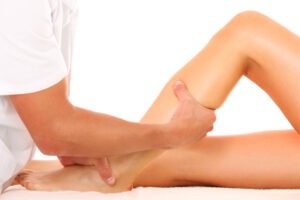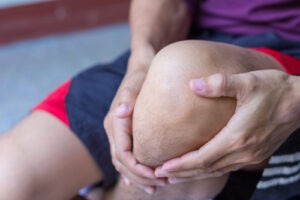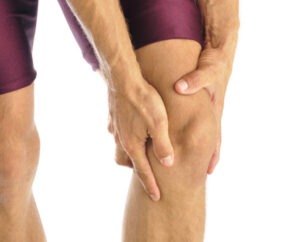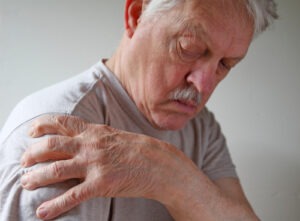 Shoulder instability can feel like the shoulder has come out of the socket or “gives way” when making certain movements. This condition can cause pain and limited range of motion, and if left untreated, can lead to more serious injury or eventual arthritis. Thomas & Bigler Knee & Shoulder Institute, led by established board certified orthopedic surgeons Dr. Steven C. Thomas and Dr. Gregory T. Bigler provides treatment of shoulder instability to patients in Las Vegas, Nevada as well as greater Pahrump, Bullhead City, Lake Havasu, and Mesquite, NV.
Shoulder instability can feel like the shoulder has come out of the socket or “gives way” when making certain movements. This condition can cause pain and limited range of motion, and if left untreated, can lead to more serious injury or eventual arthritis. Thomas & Bigler Knee & Shoulder Institute, led by established board certified orthopedic surgeons Dr. Steven C. Thomas and Dr. Gregory T. Bigler provides treatment of shoulder instability to patients in Las Vegas, Nevada as well as greater Pahrump, Bullhead City, Lake Havasu, and Mesquite, NV.
What is Shoulder Instability?
Shoulder instability is a condition in which the shoulder repeatedly slips out of the socket. This is most commonly caused by a dislocation of the shoulder during injury, or repeated overhead motions such those performed during sports. Injury or overuse of the shoulder can cause stretching and tearing of the ligaments or labrum, allowing the ball of the shoulder joint to continually slip out of the socket.
Causes
The most common cause of shoulder instability is injury that causes the shoulder to dislocate. When injury occurs, the labrum can be torn from the bone or the ligaments may become overstretched, resulting in a loose shoulder. Other than injury, the shoulder joints may become loose with repeated shoulder motions. This is more common for athletes such as baseball players and swimmers. Genetic issues can also cause one to have more elastic ligaments that cause the shoulder to be easily dislocated.
Symptoms
Symptoms of shoulder instability include:
- Repetitive dislocation of the shoulder
- Shoulder repeatedly giving out
- Shoulder feeling loose or slipping in and out of place
- Pain
When to See a Doctor
To avoid more serious injury and pain to the shoulder, you should seek medical evaluation right away. If left untreated, the damage to the shoulder may progress further and may require more intense treatment or surgery to remediate. Thomas & Bigler Knee & Shoulder Institute, led by established board certified orthopedic surgeons Dr. Steven C. Thomas and Dr. Gregory T. Bigler provides treatment of shoulder instability to patients in Las Vegas, Nevada as well as greater Pahrump, Bullhead City, Lake Havasu, and Mesquite, NV.
Contact Board Certified Surgeons Dr. Bigler or Dr. Thomas at the Knee and Shoulder Institute in Las Vegas, NV to Schedule an Appointment:
If you would like to schedule an appointment or learn more about the Knee and Shoulder Institute procedures & treatments performed by Las Vegas, Nevada board-certified surgeons Steven C. Thomas, MD and Gregory T. Bigler, MD. Contact the office today click here.
Serving patients from and around greater Las Vegas, Lake Havasu, Bullhead City, Mesquite, Pahrump, Nevada


 ACL and MCL tear are both seriously debilitating
ACL and MCL tear are both seriously debilitating It’s normal for you to want to get back on your feet quickly after a
It’s normal for you to want to get back on your feet quickly after a  Arthroscopy makes use of a camera for looking within the joint instead of using an incision to open it completely. This minimally invasive procedure allows orthopedic surgeons to diagnose, treat, and repair a wide array of diseases and conditions that may cause mobility issues and pain in the joints. If you are suffering from shoulder, knee or ankles stiffness and pain, you should consider an arthroscopy surgery.
Arthroscopy makes use of a camera for looking within the joint instead of using an incision to open it completely. This minimally invasive procedure allows orthopedic surgeons to diagnose, treat, and repair a wide array of diseases and conditions that may cause mobility issues and pain in the joints. If you are suffering from shoulder, knee or ankles stiffness and pain, you should consider an arthroscopy surgery. 
 Cortisone injections play a major role in relieving inflammation and pain symptoms from the shoulder. Besides used for the shoulder, these injections can be used in the knee, hip, spine, elbow, ankle, and wrist. Furthermore, there are several side effects to these injections which limit the number you can receive in a year.
Cortisone injections play a major role in relieving inflammation and pain symptoms from the shoulder. Besides used for the shoulder, these injections can be used in the knee, hip, spine, elbow, ankle, and wrist. Furthermore, there are several side effects to these injections which limit the number you can receive in a year. 